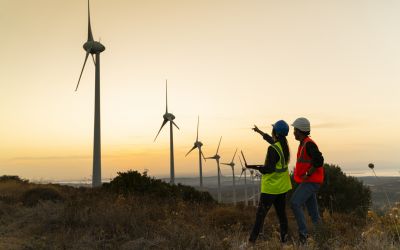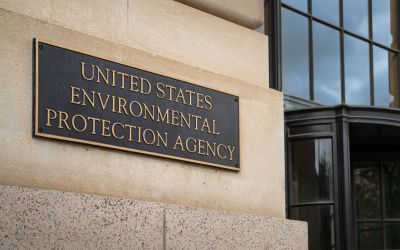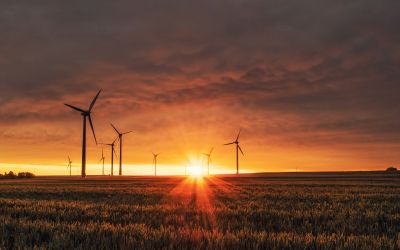Energy Transitions Commission: Clean electrification and hydrogen can deliver net-zero by 2050
Two new reports by the Energy Transitions Commission set out path to electrify economy and grow complementary role for clean hydrogen.

Two new reports by the Energy Transitions Commission set out path to electrify economy and grow complementary role for clean hydrogen.
The Energy Transitions Commission (ETC), a coalition of more than 45 leaders from global energy producers, energy industries, financial institutions and environmental advocates – including ArcelorMittal, Bank of America, BP, Iberdrola, Ørsted, Volvo Group and the World Resources Institute among others – released two new reports analysing the feasibility of achieving a netzero greenhouse gas emissions (GHG) economy by 2050 and the actions required in the next decade to put this target within reach.
Clean electrification will be at the heart of this transformation enabled by the rapidly falling costs of renewable energy, with a complementary role for clean hydrogen technology in sectors that are difficult or impossible to electrify. The report Making Clean Electrification Possible: 30 years to electrify the global economy sets out why it is essential but also feasible and affordable to multiply the size of the global power system by 5, while shifting to renewable-based electricity provision.
The Paris climate accord committed the world to limiting global warming to less than a 2°C increase from pre-industrial levels — and striving for no more than a 1.5°C rise in the planet’s average temperature. For this objective to be reached, the world needs to achieve net-zero GHG emissions by around mid-century. The ETC states that achieving a net-zero GHG emissions economy within the next 30 years is technically and economically feasible.
Electricity could represent up to 70% of final energy demand by 2050, versus 20% today, with total electricity use expected to grow as much as 5 times in the coming decades. Transitioning to clean electricity as the main source of final energy represents the cheapest and most efficient way to decarbonise the economy. The rapidly falling costs of renewables and storage solutions make it possible to achieve the required massive expansion of clean power systems at low cost, according to the reports.
The ETC states that this is undoubtedly within reach if clear national strategies for decarbonisation are put in place and appropriate power market design unlocks private financial flows. Investments in renewable power, primarily wind and solar, will represent the vast majority (around 80%) of total investments required to achieve a net zero economy.
Lord Adair Turner, Chair, ETC, said: “We now have the technologies to completely decarbonise electricity generation at low cost: and electrification is the key to zero carbon production in most of the economy. By midcentury even rich developed countries will need 2-3 times as much electricity as today, and developing economies 5-10 times as much. Governments, businesses and investors need to recognise the scale of the new industrial revolution required and the huge opportunities it creates."
With regards to power, the ETC recommends that developed countries should achieve grid emissions intensity below 30gCO2/kWh by the mid-2030s and developing countries by the mid-2040s. To achieve those medium-term objectives, critical actions in the 2020s include:
- Clear national medium-term targets for power decarbonisation and for the electrification of the economy
- Appropriate incentives for renewables deployment at scale, including power market design encouraging private investment, with a continued role for longterm contracts • Unlocking financial flows for investment in developing countries, including via blended finance vehicles
- Anticipating the build-up of network infrastructure and capabilities required for simultaneous mass electrification and power system decarbonisation
- Planning and permitting processes that accelerate implementation • Developing the technologies and business models of the future, especially for long-term energy storage and flexibility provision
The parallel report Making the Hydrogen Economy Possible: Accelerating clean hydrogen in an electrified economy sets out the complementary role for clean hydrogen and how a combination of private-sector collaboration and policy support can drive the initial ramp up of clean hydrogen production and use to reach 50 million tonnes by 2030.
Clean hydrogen will play a complementary role to decarbonise sectors where direct electrification is likely to be technologically very challenging or prohibitively expensive, such as in steel production and long-distance shipping. A net zero GHG emissions economy by mid-century will likely need to use about 500 to 800 million tonnes of clean hydrogen per annum, a 5-7 fold increase compared to hydrogen use today.
Green hydrogen, produced via the electrolysis of water, is likely to be the most costcompetitive and therefore the major production route in the long-term, due to falling renewable electricity and electrolyser equipment costs. It could account for approximately 85% of total production by 2050.
The report highlights how critical rapid ramp-up of production and use in the 2020s is to unlock cost reductions (bringing clean hydrogen costs below $2/kg) and to make midcentury growth targets achievable. However, even once clean hydrogen becomes cheaper than grey hydrogen, using hydrogen in different industry and transport sectors will often still impose a “green cost premium” compared to current high-carbon technologies.
Public policy is therefore essential to drive uptake of clean hydrogen at pace. Policymakers will also need to anticipate growing hydrogen transport and storage needs. In total, 85% of investments required to ramp-up hydrogen production is for renewable electricity provision (included in the renewables investment above).
Lord Adair Turner said: “Clean hydrogen will be key to decarbonising sectors where direct electrification is impossible or too expensive. Steel can be made zero carbon using hydrogen as the reduction agent; ocean-going ships will likely burn ammonia made from green hydrogen: and hydrogen can provide electricity when the wind isn’t blowing and the sun not shining. In total the world may need to produce and use 5-7 times as much hydrogen as today, and there are no inherent barriers to achieving that. But strong public policy support and visionary private investment is needed to drive clean hydrogen growth at the fast pace now required."
To read the full Making Clean Electrification Possible report, click here and to read the full Making the Hydrogen Economy Possible report, click here.






